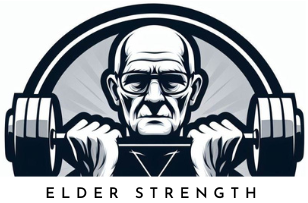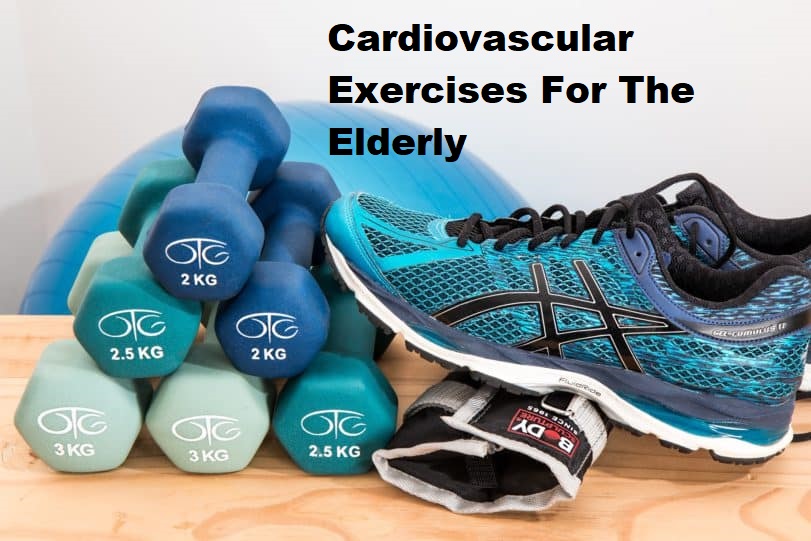In this article, you will learn what are the best cardiovascular exercises for the elderly and why cardio is so important for your health as you get older.
Cardiovascular exercise, or cardio for short, usually refers to aerobic endurance exercises like running, jogging, and walking. But actually, almost any exercise can be regarded as cardio if it raises the heart rate.
As the name suggests cardiovascular exercise means that it’s beneficial to your cardiovascular system. Thich includes your heart, circulatory system and lungs. Of course your muscles and your whole body are affected by cardio.
Cardio even affects your mind and we will look more at some of the great benefits of cardiovascular exercise in a moment.
The difference in different forms of cardio is mainly the level of skill involved and the intensity. Exercise can be split basically into two categories. Aerobic and anaerobic, depending on the intensity and duration of the exercise.
Even though cardio mainly refers to aerobic endurance exercise, anaerobic exercise can offer great benefits for your cardiovascular health as you will shortly learn.
Safety First
Cardiovascular exercise is generally one of the healthiest things you can do. But it’s important to realize that the elderly can have medical conditions that affect the ability and safety of performing cardio.
That’s why the first step with cardiovascular exercise is to consult a medical professional to ensure you are healthy and fit enough to exercise.
Heart conditions, high blood pressure, arthritis, vertigo and many other conditions can affect your ability to exercise. They can also affect which forms of exercise are suited for you.
Seniors need to be especially careful about introducing strenuous exercise suddenly as this can lead to injuries, overexertion or even heart attacks.
So be realistic with your abilities when introducing new exercise routines and always consult a professional if you have any hesitation. It’s better to be safe than sorry.
Benefits Of Cardio For Seniors
As you surely know, as we get older our heart and circulatory system start to deteriorate. This happens especially if we don’t stress them enough and are overweight. Too much stress can also cause problems with the heart.
Cardiovascular exercise and exercise, in general, offer several benefits for your heart health.
First and foremost exercise increases your heart rate which in time makes your heart stronger. Exercise also helps to control your weight which means your heart needs to work less when at rest.
The elevated heart rate during cardio also increases the blood flow to your tissues which aids recovery and helps to keep your circulatory system elastic and clog-free.
Exercise has also been proven to improve our mood and outlook on life which can both help you keep an active lifestyle and enjoy life as you get older.
All this can add up to several years or even decades of healthy and happy living as you get older. That’s why it’s important to start exercising as soon as possible if it’s not in your daily routine yet.
The great thing is that it’s never too late and there’s no such thing as wasted exercise! If you can do 5 minutes, do that, it’s way better than nothing.
Here’s a great video from FitBodyBuzz – Workout, Home Gym and Nutrition Tips YouTube channel about the benefits of cardio (YouTube embed, content not created or owned by ElderStrength.com).
Aerobic Vs Anaerobic Exercise
Before we get on with the cardio exercises we should learn about the differences between aerobic and anaerobic exercise.
Aerobic: Aerobic roughly means “involving, or requiring free oxygen”. It means the energy production of your muscles involves the use of oxygen. This oxygen is naturally provided from air through the lungs. This is why your rate of respiration increases during aerobic exercise.
Any light to moderate-intensity activity can be regarded as aerobic exercise. Activities like walking, jogging, moderate-intensity running, and swimming are good examples.
Anaerobic: Anaerobic refers to “without oxygen”. Meaning that oxygen is not needed for the immediate production of energy. Aerobic exercise is always high intensity and causes the formation of lactate in the muscles. As the energy is produced directly at the muscle without oxygen.
Lactate is what causes the burning feeling in your muscles when you do something strenuous enough. Anaerobic exercise causes your heart and breathing rate to increase as well. But not necessarily instantly during the exercise.
Any high-intensity activity that lasts less than 2 minutes has an anaerobic component. Good examples of anaerobic exercise are weightlifting, sprinting, and jumping. HIIT or High-Intensity Interval Training uses happens mainly at anaerobic intensity levels even though it has an aerobic component when continued for several minutes. This is why HIIT is very effective at increasing cardiovascular health and stamina. You can learn more about HIIT in the article HIIT For Seniors.
Anaerobic exercise is almost always accompanied by aerobic exercise due to energy demands that exceed the less efficient anaerobic metabolism. Truly aerobic exercise is so low intensity that it doesn’t generate any lactate.
Best Of Both Worlds
As you can see there is quite a bit of overlap between the two forms of energy production and you should not worry too much about the differences.
What is important for cardiovascular health is to keep heart rate elevated long enough regularly. This keeps your heart and circulatory system functioning as they are meant to.
Both aerobic and anaerobic exercise stress the cardiovascular system in different ways and you should combine them both to get the best of both worlds.
Both also promote the growth of new tissue, tissue repair, and various anti-inflammatory functions. So they are very important for defending against various inflammatory diseases as you get older.
Best Cardiovascular Exercises For The Elderly
In general, purely aerobic exercise is done mainly with the leg muscles (check out the article Leg Strengthening Exercises For Seniors for more information). Running and jogging are good examples of this as are different ball games like tennis, soccer, and badminton.
The problem with these kinds of activities for older people is the impact on joints. As we get older we lose cartilage and cushioning in our joints and any exercise that requires constant shock and impact can cause discomfort and pain.
Extended aerobic exercise can also lead to loss of muscle mass and inflammation of joints, especially in older age.
That’s why it’s recommended for the elderly to combine low-impact endurance exercise and high-intensity weight or resistance training.
Daily brisk walking is a good example of low impact workout for seniors. If you have disabilities that prevent walking or causes pain in your joint, bicycling or elliptical machine can be great substitutes.
If you combine daily walking or another form of low-impact cardio with weight training in the gym two times a week, your cardiovascular health will likely benefit from it significantly.

Weight training can be done as circuit training for the whole body in the gym or using bodyweight exercises at home.
The best way for weight training is by using a proper weight training program and machines or barbells. You can learn more about strength training for the elderly in the articles Benefits Of Strength Training For Seniors and Starting Strength For Seniors.
Endurance Exercises For The Elderly
you really enjoy endurance exercise and want to improve it further than is need for cardio health, it can be hard to find suitable sports in older age.
Since endurance requires long-lasting continuous exercise, it’s wise to save your joints and avoid anything with too much impact on joints.
For extended endurance training in seniors, my two recommendations would be cycling and rowing.
Cycling is best done outside with a proper bicycle. If you live in a hilly area and find the inclines too demanding an electric bike is a great way to lower the resistance. You can learn more about electric bikes in the article Best Electric Bikes For Seniors.
If you have trouble using a real bike and during bad weather, a regular or recumbent stationary bike can be used as an option. They are great for tracking and logging your results as well. You can learn more about them in the article Indoor Cycling For Seniors.
If you are fortunate enough to live by a bond or small lake, you can always get a rowboat for rowing as well. Most people will have to settle for a rowing machine though. Check out the article Best Rowing Machines For Seniors for more information.

When rowing and cycling for endurance, it’s important to remember to keep the intensity low enough to remain in the aerobic range. The duration of the exercise should be longer for endurance as well, 30 minutes to an hour minimum.
It’s wise to get a heart rate monitor to make sure you are remaining in the cardio range as it’s very easy to get excited and go for too high an intensity.
This can be troublesome for seniors as extended high-intensity exercise can leave you exhausted and fatigued for days if you are not used to it. It can also be dangerous for your heart if you have any form of heart disease. So please be careful and always consult a doctor before taking on new exercise routines.
Group Exercise Class Ideas For Seniors
If you don’t like exercising alone and want to meet new people, group exercise might be a good solution for you.
Water aerobics is a great way to combine both aerobic and anaerobic exercise while minimizing joint strain. It’s also great if you have disabilities that prevent the full use of your legs as there are a multitude of equipment that can help you keep afloat. Check out the post Swimming Exercises For Seniors for more ideas.
Dancing is a great way to exercise with your partner or meet new people. There are probably dance groups for seniors in every form of dance you can think of so don’t be shy!
Conclusion
I hope you enjoyed reading these cardio exercise tips for seniors. If you have any questions or would like to suggest your own favorites, please comment below. I promise to get back to you as soon as possible!
It’s important to remember that as we get older it’s not as important what kind of exercise we do as long as we keep active. I encourage you to use every chance you get to do exercise and activities that you find enjoyable.
If you can squeeze in a short strength training session a couple of times a week and try to walk as much as possible you have already done incredibly much for your health and to keep your body healthy and functional.
Please bookmark my site if you would like to learn more about how to live a long, strong life!
Thanks for reading and see you next time!
Elder Strength


A great post and a reminder that I need to get the strengthening in as well.I do a lot of walking but no strengthening, but will be joining a gym that has a circuit which includes both.How long does it take to have impact on the heart when I start the strengthening exercises?
I have aortic stenosis from mild to moderate, so I need the extra attention to my heart. Thanks for the great information.
Thank you Phyllis! First of all we would like to point out it’s extremely important to run any exercise routine through your physician when you have diagnosed heart issues. Strength training in general has as very positive effect on cardiovascular health especially when combined with cardio. The positive changes start happening as soon as you start training. It’s very important to start slowly and keep your heart rate in check with established heart disease.
Circuit training can raise your heart rate very high very fast if you are not careful. I would suggest doing more strength based training instead. Do 5 to 8 repetitions with challenging weight for two to three sets with around two minutes between sets. This will train your hear as well but won’t raise your heart rate too high. It’s also optimal for building muscle and strength. Remember to warm up to prepare your cardiovascular system to the sudden changes of blood pressure that strength training causes.